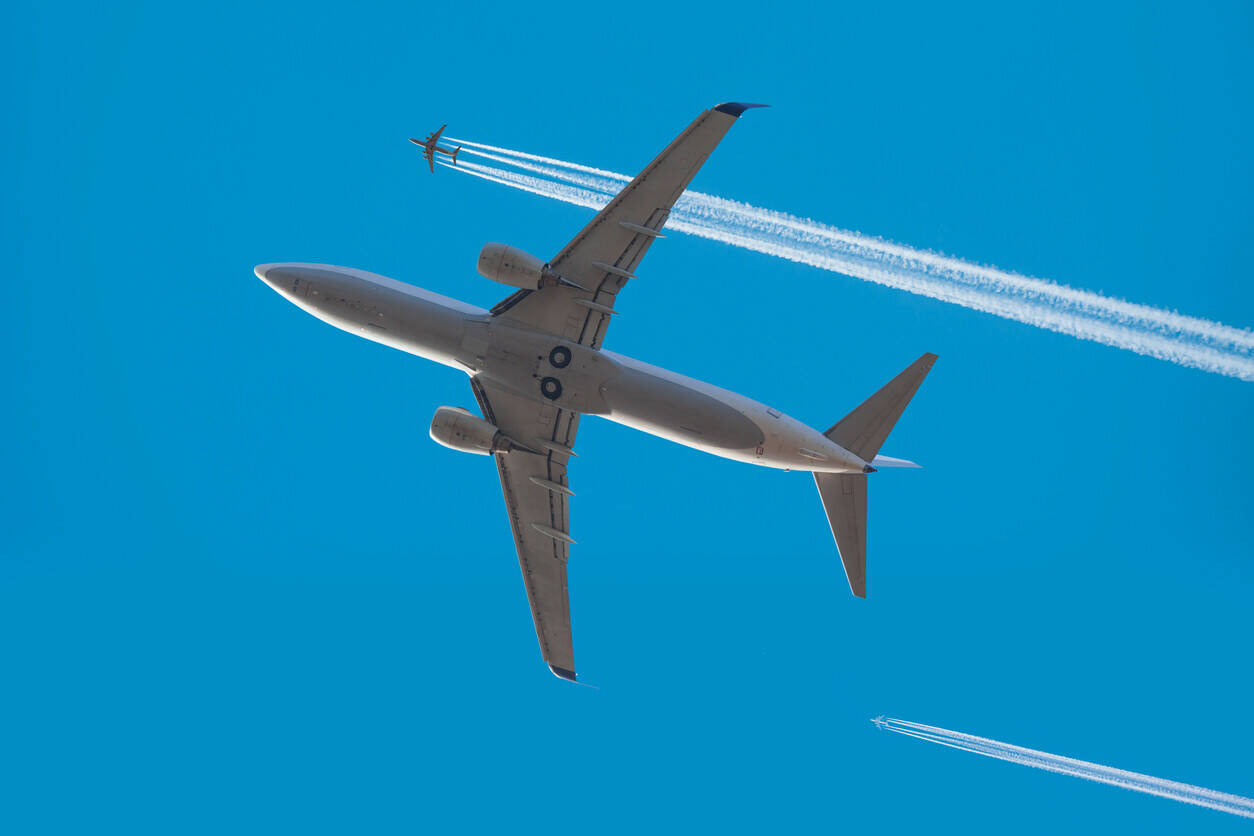Airspace Article


Image Credits: EUROCONTROL.INT



“The aviation industry is already highly focussed on reducing its climate impact. For the air traffic management community, this has traditionally meant measures to reduce excess fuel burn by aircraft on the ground and in the sky.”
Michelle Bishop
Director Programmes,
CANSO
It was an inspiring and thought provoking two days for anyone who works in aviation or climate science. I am encouraged to see the extent of work being done to answer the important questions and ensure that contrail mitigation can be done in a way that is safe and effective and avoids unintended consequences for the overall efficiency and capacity of our skies.
The aviation industry is already highly focussed on reducing its climate impact. For the air traffic management community, this has traditionally meant measures to reduce excess fuel burn by aircraft on the ground and in the sky.
It is clear, however, that eventually work must also include measures to reduce the climate impact of contrail formation. It may even be that slightly higher fuel burn will be necessary as aircraft will be forced to operate at non-optimal altitudes. The net climate impact will most likely be worth it, however, as in the majority of cases, the fuel penalty for changing altitude would be small (0.1%-2%). But contrail formation avoidance needs to be studied at scale. For example, changes in altitude or detours could have a knock-on effect and reduce airspace capacity.
It is important that efforts are made to understand these trade-offs and to refine the operational concept by which contrail avoidance measures are broadly deployed at scale in our skies. Overall, we are seeing more trials and studies. No firm conclusion can yet be drawn beyond the need for momentum.
In conjunction with this, efforts to improve weather forecast accuracy and relevant weather data availability are critical so that mitigation measures can be appropriately targeted and therefore more feasibly implemented.
The brilliant minds and momentum behind this issue leaves me optimistic.
Optimistic for the future
On 7-8 November 2023, CANSO and EUROCONTROL hosted the Sustainable Skies Conference: Contrails in Focus. The event brought together scientific research and academic organisations, technology suppliers, aircraft manufacturers, the fuels industry, air navigation service providers (ANSPs), airlines, pilots, government agencies and non-governmental organisations (NGO) active in the environmental sphere.
Those linear clouds in the sky are not just interesting formations, but in certain circumstances are contributing to climate change by causing radiative forcing and changing the balance between how much energy from the sun reaches the earth’s atmosphere and how much of it escapes.
The first day of the conference focussed on clarifying how and why contrails form, how persistent contrails can impact climate, and how that impact should be viewed in relation to CO2, where the industry already has strong environmental objectives to reduce its emissions to net zero by 2050.
Limitations in weather forecasting and opportunities to improve its accuracy were explored along with efforts to detect and track contrail formation to better understand their impact, and thus enable mitigation.
As it stands, our ability to forecast what areas will generate persistent contrails has some limitations. The focus is now on increasing the availability of humidity data at altitude by adding sensors to planes as this is expected to boost forecasting accuracy. Many studies that have tried to predict what flights will form contrails have shown a high false positive rate, meaning that flights expected to form contrails didn’t do so. Because of that, we risk over-mitigating.
The conference’s second day switched its focus to potential contrail mitigation measures and the various studies, trials and simulations, that have been undertaken or are ongoing. These explore ways to minimise the formation of contrails through avoidance techniques, such as adjusting altitudes, and the challenges of deploying such techniques at scale in busy airspace.
Conference attendees also learned how the use of sustainable aviation fuels (SAF) has shown some potential to reduce contrail formation, as have new engine technologies. SAF studies, for example, suggest that SAF produce less contrails due to a reduction in the amount of particulate matter that ice crystals can form around. This is still being studied and, with global SAF use just 0.2% of total aviation fuel, it will not make much of a difference in the near-term.


Read full article


It was an inspiring and thought provoking two days for anyone who works in aviation or climate science. I am encouraged to see the extent of work being done to answer the important questions and ensure that contrail mitigation can be done in a way that is safe and effective and avoids unintended consequences for the overall efficiency and capacity of our skies.
The aviation industry is already highly focussed on reducing its climate impact. For the air traffic management community, this has traditionally meant measures to reduce excess fuel burn by aircraft on the ground and in the sky.
It is clear, however, that eventually work must also include measures to reduce the climate impact of contrail formation. It may even be that slightly higher fuel burn will be necessary as aircraft will be forced to operate at non-optimal altitudes. The net climate impact will most likely be worth it, however, as in the majority of cases, the fuel penalty for changing altitude would be small (0.1%-2%). But contrail formation avoidance needs to be studied at scale. For example, changes in altitude or detours could have a knock-on effect and reduce airspace capacity.
It is important that efforts are made to understand these trade-offs and to refine the operational concept by which contrail avoidance measures are broadly deployed at scale in our skies. Overall, we are seeing more trials and studies. No firm conclusion can yet be drawn beyond the need for momentum.
In conjunction with this, efforts to improve weather forecast accuracy and relevant weather data availability are critical so that mitigation measures can be appropriately targeted and therefore more feasibly implemented.
The brilliant minds and momentum behind this issue leaves me optimistic.
Optimistic for the future
Those linear clouds in the sky are not just interesting formations, but in certain circumstances are contributing to climate change by causing radiative forcing and changing the balance between how much energy from the sun reaches the earth’s atmosphere and how much of it escapes.
The first day of the conference focussed on clarifying how and why contrails form, how persistent contrails can impact climate, and how that impact should be viewed in relation to CO2, where the industry already has strong environmental objectives to reduce its emissions to net zero by 2050.
Limitations in weather forecasting and opportunities to improve its accuracy were explored along with efforts to detect and track contrail formation to better understand their impact, and thus enable mitigation.
As it stands, our ability to forecast what areas will generate persistent contrails has some limitations. The focus is now on increasing the availability of humidity data at altitude by adding sensors to planes as this is expected to boost forecasting accuracy. Many studies that have tried to predict what flights will form contrails have shown a high false positive rate, meaning that flights expected to form contrails didn’t do so. Because of that, we risk over-mitigating.
The conference’s second day switched its focus to potential contrail mitigation measures and the various studies, trials and simulations, that have been undertaken or are ongoing. These explore ways to minimise the formation of contrails through avoidance techniques, such as adjusting altitudes, and the challenges of deploying such techniques at scale in busy airspace.
Conference attendees also learned how the use of sustainable aviation fuels (SAF) has shown some potential to reduce contrail formation, as have new engine technologies. SAF studies, for example, suggest that SAF produce less contrails due to a reduction in the amount of particulate matter that ice crystals can form around. This is still being studied and, with global SAF use just 0.2% of total aviation fuel, it will not make much of a difference in the near-term.
On 7-8 November 2023, CANSO and EUROCONTROL hosted the Sustainable Skies Conference: Contrails in Focus. The event brought together scientific research and academic organisations, technology suppliers, aircraft manufacturers, the fuels industry, air navigation service providers (ANSPs), airlines, pilots, government agencies and non-governmental organisations (NGO) active in the environmental sphere.

Airspace Article